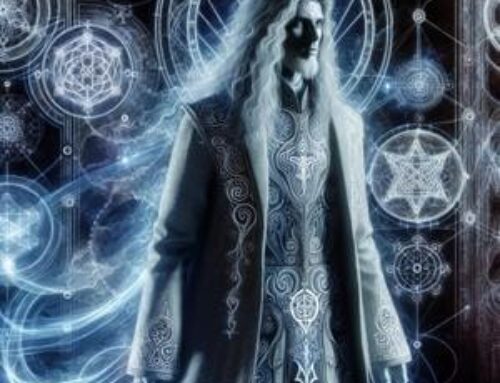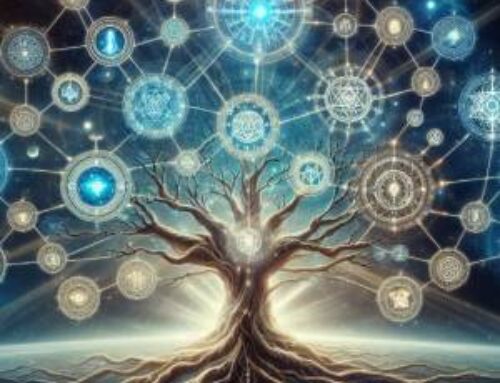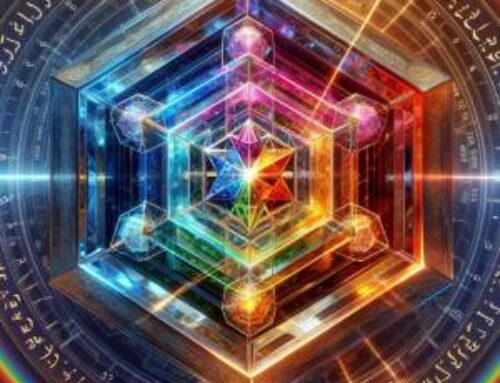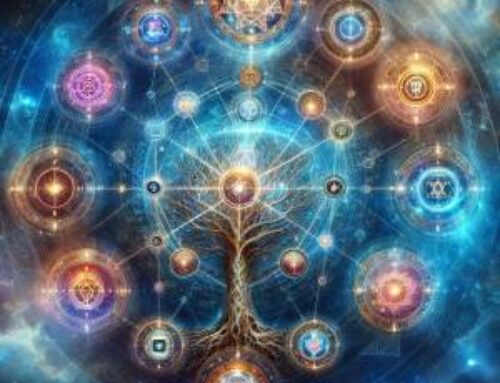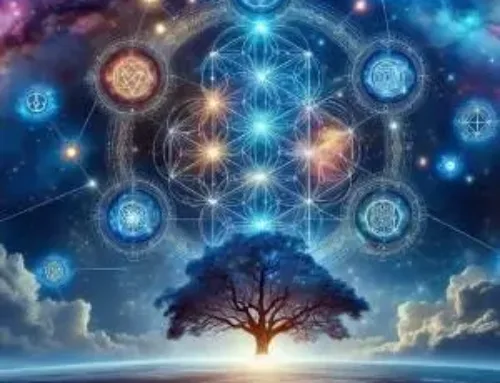Contents
Introduction to Etz Chaim Kabbalah
The Etz Chaim Kabbalah stands as a profound emblem within the mystical landscape, offering insights into the spiritual structure of the cosmos. This term, which translates to “Tree of Life,” is not merely a symbol but a vital framework that maps the interplay between the divine and the manifest world. It reveals the pathways through which the infinite explores and expresses the finite, embodying processes that guide creation, existence, and spiritual evolution.
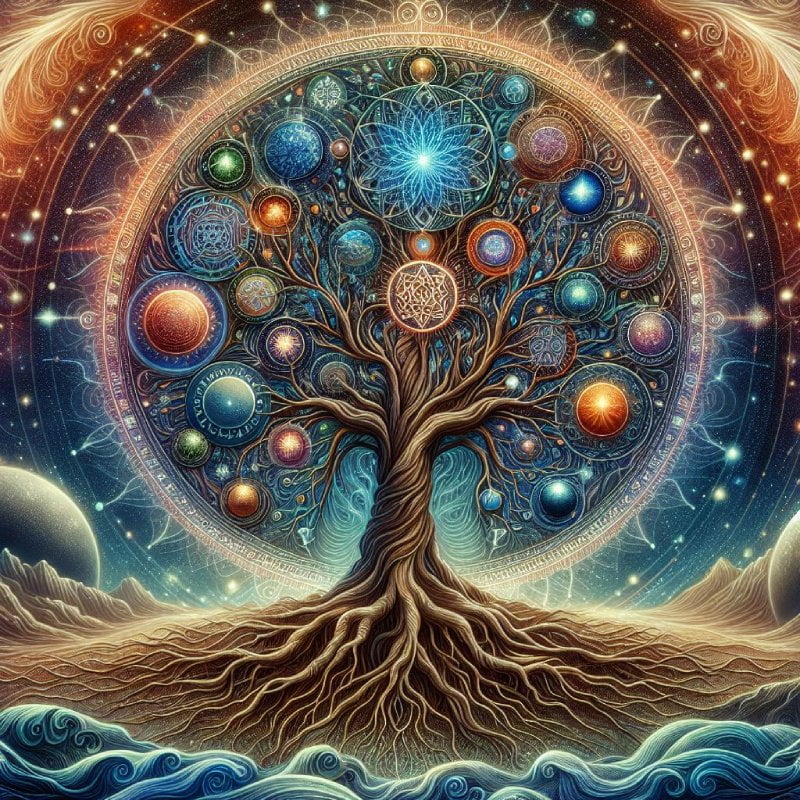
Etz Chaim (Hebrew: OTz ChYYM) serves as a metaphysical scaffold that elucidates ten divine emanations, or Sephirot, encompassing concepts such as wisdom, understanding, and sovereignty. These spheres are connected by twenty-two paths, each imbued with specific mystical attributes and ethical imperatives, crafting a comprehensive guide for personal and universal development.
The resonance of the Tree of Life extends its roots deep into various esoteric traditions, influencing a myriad of spiritual practices and philosophies across cultures. Its timeless relevance continues to unlock profound self-awareness and insights into the interconnectedness of all existence, providing a quintessential key to the perennial quest for knowledge and enlightenment.
Structural Insights of the Tree of Life
The Etz Chaim presents a detailed cosmological model through its depiction of the Tree of Life, an iconic schematic that is both vast in complexity and rich in symbolism. This tree structurally outlines ten Sephirot, or emanations, which are not merely points of light but are considered the attributes through which the unmanifest manifests and regulates the universe. Each Sephira represents a specific aspect of life, from foundational elements like stability and will to transcendent qualities like wisdom and understanding.
These emanations are linked by twenty-two paths, forming a network of passageways that map the flow of divine energy throughout the universe. Each path corresponds to a letter of the Hebrew alphabet and a major arcana card in the Tarot, revealing layers of symbolic meaning that are meditated upon and interpreted in various esoteric practices. This intricate connectivity ensures that the Tree of Life is not static; it is a dynamic, living structure that evolves and adapits to the mystical journey of the seeker.
Navigating through the Tree of Life involves traversing these paths, each journey offering unique insights and challenges designed to elevate the seeker’s understanding of themselves and the universe. The structure of Etz Chaim thus serves as a guide for spiritual ascent, symbolizing the quest for divine illumination and the process of returning to the source of all creation.
Historical Evolution of Etz Chaim Concepts
The concept of the Etz Chaim has evolved significantly over centuries, reflecting the deepening understanding of mysticism and spirituality. Initially rooted in ancient wisdom, the Tree of Life was conceptualized in the early Kabbalistic texts, where it was portrayed as a map of creation that aligns the human form with cosmic forces. Over the centuries, scholars and mystics have expanded upon this framework, exploring its implications and applications across various domains of knowledge and practice.
In medieval times, the Etz Chaim was further refined and integrated into the broader hermetic sciences, linking it to alchemy, astrology, and other mystical systems. This period saw the proliferation of detailed manuscripts that depicted the Tree of Life in various artistic renditions, each emphasizing different aspects of its structure and symbolism. The Renaissance era brought a resurgence in its study, with philosophers and theologians drawing parallels between Kabbalistic teachings and Christian mysticism, which enriched the understanding of Etz Chaim across cultural and religious boundaries.
In modern times, the Tree of Life continues to be a central subject of study within esoteric schools, each interpreting its symbolism through contemporary lenses of psychology, science, and metaphysics. This ongoing evolution reflects the universal and timeless nature of the Etz Chaim, proving its enduring relevance in the quest for spiritual knowledge and understanding.
Etz Chaim and the Initiatory Path
The Etz Chaim, or Tree of Life, is not only a symbol of divine structure but also a map of the initiatory path, where each Sephirah represents a degree of initiation or enlightenment. In this esoteric framework, the journey through the Tree of Life is a journey of ascending consciousness, where each node (Sephirah) embodies a specific spiritual and existential archetype that the seeker must understand and integrate.
The lowest Sephirah, Malkuth, represents the physical world and the starting point of the spiritual journey. As one ascends the Tree, moving through Yesod, Hod, Netzach, and up to Kether at the crown, each step is an initiation into a higher state of being and understanding. Each Sephirah serves as a gateway to the profound mysteries of life, reflecting various aspects of human experience—emotional, intellectual, and spiritual.
This initiatory journey through the Tree of Life is a progressive unveiling of deeper knowledge and insight. It is akin to acquiring keys to unlock the successive doors of spiritual enlightenment. The paths between the Sephiroth are conduits for this progression, each path offering unique challenges and lessons that the seeker must master to move forward. These paths are often associated with moral and ethical growth, which are essential components of spiritual development.
As one progresses through these stages, the ultimate goal is to reach Kether, the crown of spiritual achievement, where one attains unity with the source of all creation. This process mirrors the mystical pursuit of enlightenment, where the practitioner evolves from a state of mundane awareness to divine consciousness.
This structured approach to spiritual ascent is emblematic of the transformative potential of the Etz Chaim. It outlines a comprehensive and disciplined path that demands rigor, ethical purity, and metaphysical understanding, making the Tree of Life a vital tool for anyone seeking to deepen their spiritual practice and comprehension of the universe’s vast mysteries.
Conclusion
The exploration of Etz Chaim Kabbalah, or the Tree of Life, transcends simple philosophical inquiry; it is a profound journey into the very essence of existence and the spiritual architecture of the universe. Through the Tree of Life, seekers and scholars alike embark on a path that mirrors the initiatory steps of spiritual awakening, each Sephirah offering a distinct portal to divine wisdom.
As we have journeyed through the structure of the Tree, from Malkuth to Kether, we have seen how each node is not just a point of passage but a realm of learning where spiritual, mental, and moral growth is nurtured. The paths that connect these nodes are far more than mere intersections; they are challenges and opportunities for deep personal transformation and enlightenment.
In today’s world, where spiritual pursuits are often sidelined by the materialistic rush, the Etz Chaim offers a sanctuary of balance and depth. It invites us to slow down and reflect, to consider not only what lies at the surface but to delve deeper into the metaphysical realities that govern our existence. The Tree of Life remains a vital tool for anyone serious about understanding the complexities of life, the universe, and beyond.
The wisdom of the Etz Chaim Kabbalah does not just lie in its historical and cultural significance; it is also a living, breathing guide that continues to influence contemporary spiritual practices and philosophical thought. Its universal themes of connection, balance, and enlightenment resonate across cultural and temporal boundaries, offering insights that are as relevant today as they were centuries ago.
Unlock the Initiatory Secrets of the Tree of Life
Dive into the depths of mysticism and expand your understanding of the universe with the Hermetic Academy. Whether you’re beginning your journey or seeking to deepen your existing knowledge, the Academy offers comprehensive courses on Etz Chaim Kabbalah and many other esoteric subjects. Join a community of like-minded individuals and explore structured teachings that illuminate the path from the physical to the divine.
FAQ – Etz Chaim Kabbalah
1. What is Etz Chaim Kabbalah?
A: Etz Chaim, or the Tree of Life, stands as a principal symbolic framework within Kabbalah, symbolizing the architecture of the universe and the spiritual ascension through varying levels of consciousness. It consists of ten emanations or Sephirot linked by twenty-two paths, each embodying diverse metaphysical and psychological attributes.
2. How can studying the Etz Chaim enhance my spiritual progress?
A: Engaging with the Etz Chaim offers a structured conduit for personal and spiritual growth. Each Sephirah and interconnected path provides unique perspectives on the essence of being and the self, assisting seekers in cultivating a profound comprehension of their role in the cosmos and progressing toward spiritual illumination.
3. What does each Sephirah on the Tree of Life represent?
A: Each Sephirah on the Tree of Life encapsulates a distinct aspect of the Divine or a facet of human experience, such as wisdom, understanding, beauty, and sovereignty. These concepts are not static; rather, they are considered vibrant, influential forces that shape our existence and spiritual advancement.
4. Where can I study Etz Chaim Kabbalah in depth?
A: For a comprehensive exploration of Etz Chaim Kabbalah, the Hermetic Academy stands out as a superior resource. The Academy provides courses and materials that thoroughly explore the intricate aspects of the Tree of Life, facilitated by experts in the domain. This educational platform is crafted to aid both novices and experienced practitioners in their spiritual advancement through the profound expanse of Kabbalistic teachings.
References:
(1) Mathers, S. L. M. (1887). The Kabbalah Unveiled. London.
(2) Eliphas, L. (1854). Dogme et Rituel de la Haute Magie. Paris.
(3) Pietikainen, P. (1998). Archetypes as symbolic forms. Journal of Analytical Psychology, 43, 325-343. https://doi.org/10.1111/1465-5922.00032.
(4) Eckartshausen, Karl von. (1802). Die Wolke über dem Heiligtum. München.
(5) Rubenstein, E. (2020). The Tree of Life: The Kabbalah of Immortality. Hermetic World, Paphos.

